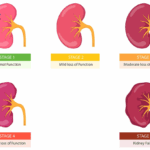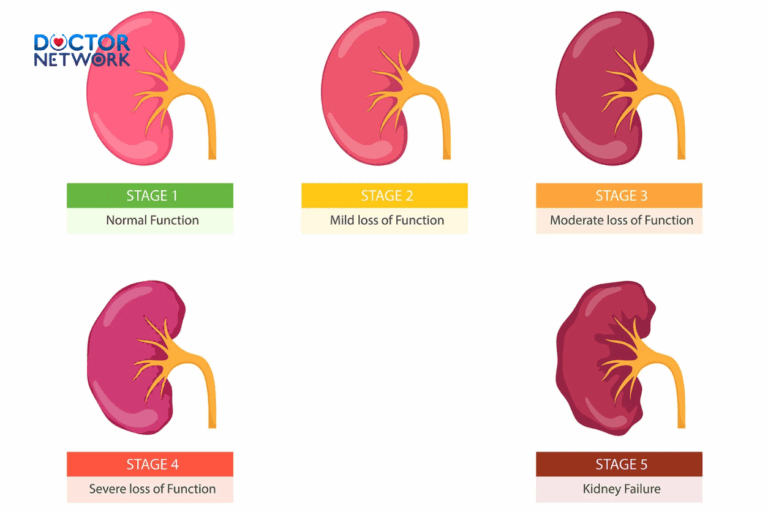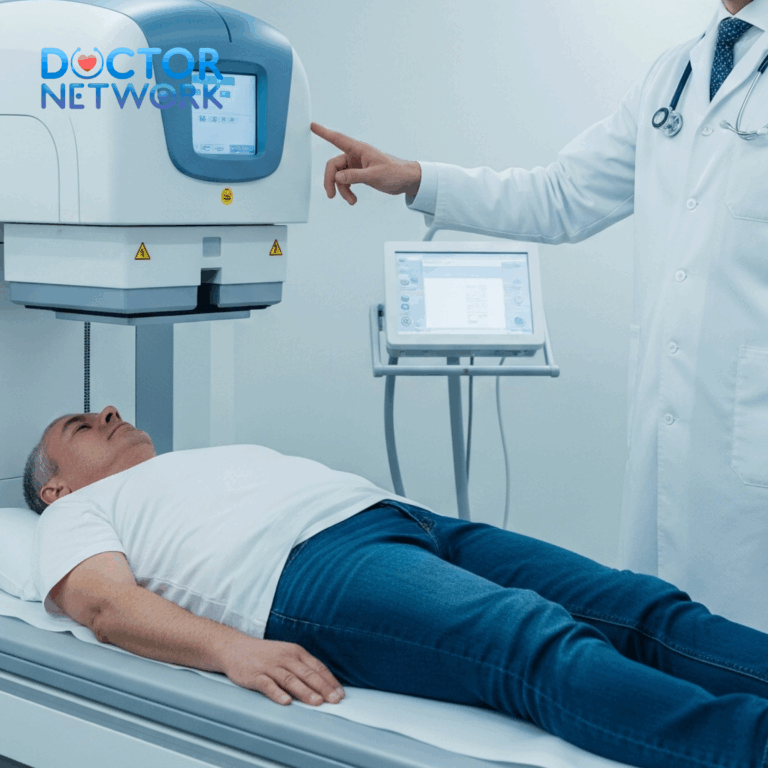“Shortness of breath after eating“, medically termed postprandial dyspnea, represents a concerning symptom that affects millions of individuals worldwide. This respiratory difficulty occurs when your body struggles to maintain adequate oxygen levels or proper breathing patterns following meals. While most cases stem from benign causes like overeating or gastroesophageal reflux, this symptom can occasionally signal serious underlying conditions requiring immediate medical attention.
This comprehensive guide examines the multifaceted nature of post-meal breathlessness, exploring everything from common digestive triggers to life-threatening allergic reactions. We’ll analyze the physiological mechanisms behind postprandial respiratory distress, identify warning signs that warrant emergency care, and provide evidence-based prevention strategies. Understanding these crucial aspects empowers you to recognize when breathlessness after meals represents a minor inconvenience versus a medical emergency demanding prompt intervention.
General Causes of Shortness of Breath
Dyspnea manifests through various mechanisms, each presenting unique challenges for respiratory function. Multiple factors can precipitate breathing difficulties, ranging from environmental conditions to serious pathological states.
Common Underlying Factors
High altitude exposure creates oxygen-deficient environments that strain respiratory systems. Obesity and poor physical conditioning significantly impact breathing capacity, as excess adipose tissue restricts diaphragmatic movement and reduces lung expansion. Excessive physical exertion overwhelms cardiovascular and pulmonary systems, leading to acute breathlessness.
Systemic conditions frequently contribute to respiratory distress. Anemia reduces oxygen-carrying capacity, forcing the respiratory system to compensate through increased ventilation. Pneumonia, lung cancer, and tuberculosis directly impair pulmonary function through inflammation, tissue destruction, or obstruction. COVID-19 has emerged as a significant cause of respiratory complications, ranging from mild dyspnea to severe acute respiratory syndrome.
Pulmonary embolism represents a life-threatening condition where blood clots obstruct pulmonary arteries, dramatically reducing oxygen exchange. Aspiration injuries occur when foreign materials enter the respiratory tract, causing immediate breathing difficulties and potential long-term complications.
Positional Variations in Breathing Difficulty
Body position significantly influences respiratory symptoms, often providing diagnostic clues for underlying conditions. Orthopnea, difficulty breathing when lying flat, commonly indicates heart failure as fluid accumulates in the lungs. Paroxysmal nocturnal dyspnea involves sudden awakening with severe breathlessness, another hallmark of cardiac dysfunction.
Lateral positioning sometimes exacerbates symptoms, particularly in patients with pleural effusions or unilateral lung disease. Platypnea, the rare occurrence of breathlessness when upright, suggests specific cardiac or pulmonary pathology.
Interaction Between General Factors and Post-Meal Dyspnea
Pre-existing conditions often amplify postprandial breathing difficulties through complex physiological interactions. Anemic patients experience heightened oxygen demands during digestion, as the gastrointestinal system requires increased blood flow for proper function. This metabolic demand can overwhelm already compromised oxygen-carrying capacity, resulting in pronounced breathlessness after meals.
Individuals with compromised pulmonary function from previous pneumonia or chronic lung disease face particular challenges. The inflammatory aftermath of respiratory infections can create persistent airway sensitivity, making patients more susceptible to breathing difficulties when additional physiological stressors like large meals are introduced.

Specific Causes of Shortness of Breath After Eating
Food Allergies
Food allergies trigger immune-mediated responses that can rapidly compromise respiratory function. These hypersensitivity reactions typically manifest within minutes to hours following exposure to allergenic proteins, creating a spectrum of symptoms from mild discomfort to life-threatening emergencies.
The most common allergenic foods include shellfish, which accounts for the majority of adult-onset food allergies. Eggs, dairy products, peanuts, and tree nuts represent significant triggers across all age groups. Additionally, fish, wheat, soybeans, and sesame seeds frequently cause allergic reactions, particularly in individuals with multiple food sensitivities.
Common Food Allergens by Category:
| Protein Source | Common Examples | Typical Onset |
|---|---|---|
| Shellfish | Shrimp, crab, lobster, oysters | 30 minutes – 2 hours |
| Tree Nuts | Almonds, walnuts, cashews, pecans | 15 minutes – 1 hour |
| Legumes | Peanuts, soybeans, lentils | 30 minutes – 2 hours |
| Dairy | Milk proteins, cheese, yogurt | 1-3 hours |
| Grains | Wheat, barley, rye | 2-4 hours |
Respiratory symptoms in food allergies encompass a range of manifestations. Mild reactions may include coughing, throat clearing, and subtle wheezing. More severe responses involve hoarseness, persistent cough, and noticeable breathing difficulties. The oral food challenge test remains the gold standard for definitively diagnosing food allergies under controlled medical supervision.
Prevention requires strict avoidance of identified allergens, careful label reading, and maintaining emergency medications. Cross-contamination during food preparation poses significant risks, necessitating heightened awareness in restaurant and social dining situations.
Anaphylaxis
Anaphylaxis represents the most severe manifestation of allergic reactions, constituting a medical emergency requiring immediate intervention. This systemic hypersensitivity reaction can progress rapidly from mild symptoms to cardiovascular collapse within minutes.
The clinical presentation of anaphylaxis involves multiple organ systems simultaneously. Cutaneous symptoms include widespread urticaria (hives), erythematous rashes, and angioedema affecting the face, lips, and airways. Respiratory manifestations encompass chest tightness, hoarseness, stridor, and severe dyspnea that may progress to complete airway obstruction.
Gastrointestinal symptoms frequently accompany anaphylactic reactions, including nausea, vomiting, diarrhea, and severe abdominal cramping. The combination of respiratory and gastrointestinal symptoms often creates a characteristic clinical picture that aids in rapid diagnosis.
Cardiovascular complications represent the most life-threatening aspects of anaphylaxis. Patients may experience weak pulse, tachycardia, hypotension, dizziness, and syncope. In severe cases, cardiac arrest can occur, making immediate treatment absolutely critical.
Emergency management requires immediate epinephrine administration via auto-injector devices like EpiPen. This medication counteracts the massive histamine release and helps restore normal cardiovascular and respiratory function. Following epinephrine administration, patients require immediate transport to emergency facilities for monitoring and additional treatment.
Heartburn and Gastroesophageal Reflux Disease (GERD)
GERD represents one of the most common causes of postprandial breathing difficulties, affecting approximately 20% of adults in developed countries. This condition occurs when stomach acid regurgitates into the esophagus, creating a cascade of symptoms that can significantly impact respiratory function.
The pathophysiology involves weakness of the lower esophageal sphincter (LES), a muscular ring that normally prevents acid reflux. When this sphincter fails to maintain adequate pressure, gastric contents migrate upward, causing direct irritation to esophageal tissues and indirect effects on adjacent structures.
Acid reflux can trigger respiratory symptoms through several mechanisms. Direct aspiration of gastric contents into the airways causes immediate irritation and inflammation. Additionally, acid stimulation of esophageal nerve endings creates reflex bronchospasm, leading to breathing difficulties even without direct airway contact.
GERD Symptom Progression:
- Mild Symptoms: Occasional heartburn, mild regurgitation
- Moderate Symptoms: Regular chest discomfort, chronic cough
- Severe Symptoms: Persistent dyspnea, chronic hoarseness, aspiration pneumonia
Classical GERD symptoms include burning chest pain, acid regurgitation, and a sour or bitter taste in the mouth. However, many patients present with atypical symptoms such as chronic cough, hoarseness, difficulty swallowing, and asthma-like symptoms.
Treatment approaches encompass both pharmacological and lifestyle interventions. Proton pump inhibitors (PPIs) effectively reduce acid production, while H2 receptor blockers and antacids provide symptomatic relief. Lifestyle modifications include dietary changes, weight loss, and positional therapy to minimize reflux episodes.
Overeating and Gastric Distension
Excessive food consumption creates mechanical pressure within the abdomen that can significantly compromise respiratory function. When the stomach becomes overdistended, it physically elevates the diaphragm, reducing lung expansion capacity and creating a sensation of breathlessness.
Certain foods particularly contribute to gastric distension through gas production and delayed gastric emptying. Legumes like beans and lentils contain complex oligosaccharides that undergo bacterial fermentation in the colon, producing significant gas volumes. Cruciferous vegetables such as cabbage, broccoli, and Brussels sprouts have similar effects.
High-fat foods significantly delay gastric emptying, prolonging the sensation of fullness and maintaining elevated intra-abdominal pressure. Spicy foods can irritate the gastric mucosa and potentially trigger reflux, compounding breathing difficulties.
Carbonated beverages introduce additional gas into the digestive system, while the bubbles can exacerbate feelings of fullness and bloating. Alcohol consumption can relax the lower esophageal sphincter, increasing the likelihood of reflux-related breathing problems.
Obesity and Obesity Hypoventilation Syndrome
Obesity significantly impacts respiratory function through multiple mechanisms that become particularly pronounced after meals. Excess adipose tissue around the neck, chest, and abdomen creates mechanical restrictions that impair normal breathing patterns.
Obesity Hypoventilation Syndrome (OHS) represents a severe complication affecting approximately 10-20% of morbidly obese individuals. This condition involves inadequate ventilation leading to chronic hypercapnia (elevated CO2) and hypoxemia (reduced oxygen levels). The central nervous system’s respiratory control centers become desensitized to CO2 levels, resulting in chronically inadequate breathing.
Weight Categories and Respiratory Risk:
| BMI Category | Weight Status | Respiratory Impact |
|---|---|---|
| 18.5-24.9 | Normal weight | Minimal impact |
| 25-29.9 | Overweight | Mild exertional dyspnea |
| 30-34.9 | Obesity Class I | Moderate breathing difficulties |
| 35-39.9 | Obesity Class II | Significant respiratory impairment |
| ≥40 | Obesity Class III | Severe respiratory compromise |
The postprandial period presents particular challenges for obese individuals as digestion requires increased metabolic activity and oxygen consumption. The combination of mechanical restriction and increased metabolic demands can create significant breathing difficulties following meals.
Respiratory Infections
Acute and chronic respiratory infections significantly impact breathing capacity and can make postprandial dyspnea more pronounced. COVID-19 has emerged as a major cause of respiratory complications, ranging from mild upper respiratory symptoms to severe pneumonia and acute respiratory distress syndrome.
Pneumonia, whether bacterial, viral, or fungal in origin, causes alveolar inflammation that impairs gas exchange. The inflammatory response produces thick secretions that obstruct airways and reduce effective ventilation. Patients with pneumonia often experience worsened symptoms after eating as the increased metabolic demands of digestion overwhelm compromised respiratory function.
Bronchitis, both acute and chronic forms, involves inflammation of the bronchial passages that can significantly impact breathing. Chronic bronchitis, often associated with smoking or environmental exposures, creates persistent airway inflammation that makes patients more susceptible to postprandial breathing difficulties.
The inflammatory mediators released during respiratory infections can increase airway sensitivity, making patients more prone to bronchospasm and breathing difficulties when additional stressors like large meals are introduced.
Hiatal Hernia
Hiatal hernia occurs when a portion of the stomach protrudes through the diaphragmatic opening into the thoracic cavity. This anatomical displacement can significantly impact both digestive and respiratory function, particularly following meals.
Two main types of hiatal hernias exist. Sliding hiatal hernias, comprising 95% of cases, involve the gastroesophageal junction and upper stomach sliding upward through the hiatus. Paraesophageal hernias, though less common, represent a more serious condition where the stomach herniates alongside the esophagus while the gastroesophageal junction remains in normal position.
The mechanism of respiratory compromise involves direct mechanical compression of the lungs and diaphragm by the herniated stomach. This compression becomes more pronounced after meals when the stomach distends with food and gas, creating increased pressure on surrounding structures.
Risk Factors for Hiatal Hernia:
- Advanced age (>50 years)
- Obesity (BMI >30)
- Smoking history
- Pregnancy
- Genetic predisposition
- Chronic coughing or straining
Symptoms typically worsen after meals due to increased gastric volume and pressure. Patients may experience chest pain, dyspnea, and early satiety. Large paraesophageal hernias can cause severe complications including gastric volvulus or strangulation, requiring emergency surgical intervention.
Treatment options range from conservative management with dietary modifications and acid suppression to surgical repair for severe cases. Laparoscopic techniques have revolutionized hiatal hernia repair, offering reduced morbidity and faster recovery compared to open procedures.
GERD-Related Asthma
The relationship between gastroesophageal reflux and asthma involves complex neurological and inflammatory pathways that can significantly impact respiratory function. Acid reflux triggers bronchospasm through two primary mechanisms: reflex bronchoconstriction and direct airway irritation.
Reflex bronchoconstriction occurs when acid stimulates vagal afferent nerves in the esophagus, triggering a reflex arc that results in airway smooth muscle contraction. This neurological response can occur even when acid doesn’t directly contact the airways, explaining why some patients experience respiratory symptoms without obvious aspiration.
Direct airway irritation results from microaspiration of gastric contents into the tracheobronchial tree. Even small amounts of acid can cause significant airway inflammation, leading to increased mucus production, bronchospasm, and dyspnea.
Clinical presentation includes typical asthma symptoms such as wheezing, cough, chest tightness, and shortness of breath that characteristically worsen after meals or when lying flat. Many patients experience nocturnal symptoms as reflux tends to increase during sleep.
Diagnosis requires careful correlation of respiratory symptoms with reflux episodes. Esophageal pH monitoring can demonstrate temporal relationships between acid exposure and respiratory symptoms. Pulmonary function tests may show reversible airway obstruction consistent with asthma.
Treatment focuses primarily on aggressive acid suppression with proton pump inhibitors. Lifestyle modifications including dietary changes, weight loss, and sleep positioning can significantly improve symptoms. Some patients may require both anti-reflux medications and bronchodilators for optimal control.
Chronic Obstructive Pulmonary Disease (COPD)
COPD represents a progressive lung disease characterized by airflow limitation that significantly impacts quality of life and respiratory function. Patients with COPD face particular challenges during the postprandial period due to increased metabolic demands and mechanical factors.
The pathophysiology involves chronic inflammation of the airways and alveoli, leading to structural changes that impair gas exchange and airflow. Emphysema destroys alveolar walls, reducing surface area for gas exchange, while chronic bronchitis increases mucus production and airway resistance.
Large meals create additional challenges for COPD patients through several mechanisms. Gastric distension elevates the diaphragm, reducing lung expansion capacity in patients who already have compromised respiratory function. The metabolic demands of digestion increase oxygen consumption at a time when oxygen delivery is already impaired.
COPD Symptom Severity Classification:
| Stage | FEV1 (% Predicted) | Symptoms | Functional Impact |
|---|---|---|---|
| Mild | ≥80% | Occasional dyspnea | Minimal limitation |
| Moderate | 50-79% | Dyspnea on exertion | Some limitation |
| Severe | 30-49% | Dyspnea with daily activities | Significant limitation |
| Very Severe | <30% | Dyspnea at rest | Severe limitation |
Patients often experience increased fatigue, dyspnea, and reduced exercise tolerance following meals. The energy required for digestion can be substantial, potentially overwhelming the limited respiratory reserve in COPD patients.
Management strategies include consuming smaller, more frequent meals to reduce gastric distension. Easily digestible foods such as mashed potatoes, soups, and well-cooked vegetables require less energy for digestion. Some patients benefit from supplemental oxygen during meals to meet increased metabolic demands.
Cardiac Arrhythmias
Heart rhythm disturbances can significantly impact breathing patterns and oxygen delivery, particularly during the postprandial period when cardiovascular demands increase. While many arrhythmias are benign, some can cause concerning symptoms including dyspnea.
Postprandial arrhythmias occur through several mechanisms. Large meals activate the sympathetic nervous system, increasing heart rate and contractility. Gastric distension can stimulate the vagus nerve, potentially triggering arrhythmias in susceptible individuals. Electrolyte shifts during digestion may also contribute to rhythm disturbances.
Common arrhythmias associated with postprandial symptoms include atrial fibrillation, premature ventricular contractions, and paroxysmal supraventricular tachycardia. While often benign, these rhythm disturbances can cause palpitations, chest discomfort, and dyspnea.
Warning Signs Requiring Emergency Care:
- Persistent dyspnea lasting >30 minutes
- Rapid heart rate (>120 bpm at rest)
- Chest pain or pressure
- Dizziness or near-syncope
- Profuse sweating
- Severe fatigue
The relationship between cardiac function and postprandial dyspnea extends beyond simple arrhythmias. Angina pectoris can occur when large meals redirect blood flow to the digestive system, potentially reducing coronary perfusion in patients with coronary artery disease.
Heart failure patients face particular challenges as increased venous return during digestion can overwhelm compromised cardiac function, leading to pulmonary congestion and dyspnea. The combination of increased metabolic demands and reduced cardiac reserve creates a perfect storm for respiratory symptoms.
Pulmonary Aspiration
Aspiration involves the abnormal entry of food, liquid, or gastric contents into the respiratory tract, creating immediate and potentially life-threatening complications. This condition can occur in anyone but particularly affects individuals with impaired swallowing mechanisms or altered consciousness.
The immediate consequences of aspiration include coughing, choking, and acute dyspnea as the body attempts to clear foreign material from the airways. Larger particles can cause mechanical obstruction, while smaller particles may reach the alveoli, triggering inflammation and gas exchange impairment.
Aspiration pneumonia represents a serious complication that can develop when aspirated material introduces bacteria into the lungs. This infection typically involves anaerobic bacteria from the oral cavity and can cause severe pneumonia with high morbidity and mortality rates.
High-Risk Conditions for Aspiration:
- Stroke with dysphagia
- Parkinson’s disease
- Alzheimer’s dementia
- Alcohol intoxication
- Sedative medication use
- General anesthesia
- Gastroesophageal reflux disease
- Obesity
Risk factors include neurological disorders that impair swallowing coordination, such as stroke, Parkinson’s disease, or dementia. Alcohol and sedative medications can depress protective reflexes, increasing aspiration risk. GERD patients face increased risk due to regurgitation of gastric contents.
Prevention strategies focus on identifying high-risk individuals and implementing appropriate precautions. Speech therapy evaluation can assess swallowing function and recommend texture modifications. Positioning during meals, avoiding large volumes of liquids, and maintaining alertness during eating can significantly reduce aspiration risk.
Psychological Factors and Anxiety
The relationship between psychological factors and postprandial dyspnea involves complex interactions between the nervous system, respiratory function, and cognitive perception. Anxiety can both cause and result from breathing difficulties, creating a self-perpetuating cycle that significantly impacts quality of life.
The anxiety loop begins when individuals experience unexplained dyspnea after eating, leading to worry and fear about future episodes. This anticipatory anxiety can trigger physiological responses including increased heart rate, shallow breathing, and hyperventilation, which paradoxically worsen the perceived breathing difficulties.
Panic attacks can occur during or after meals, characterized by sudden onset of intense fear accompanied by dyspnea, chest pain, palpitations, and feelings of impending doom. These episodes can be so severe that patients avoid eating in public or restrict their diets, leading to nutritional deficiencies and social isolation.
The mind-body connection plays a crucial role in postprandial dyspnea. Stress and anxiety can increase gastric acid production, delay gastric emptying, and heighten sensitivity to normal physiological sensations. This heightened awareness can transform minor digestive discomfort into perceived respiratory emergencies.
Cognitive-behavioral therapy techniques can help break the anxiety cycle by teaching patients to recognize and challenge catastrophic thoughts about their symptoms. Relaxation techniques, including deep breathing exercises and progressive muscle relaxation, can help manage acute episodes and reduce overall anxiety levels.
Diabetes and Metabolic Factors
Diabetes can contribute to postprandial dyspnea through multiple mechanisms involving metabolic dysfunction, cardiovascular complications, and autonomic neuropathy. While dyspnea isn’t typically an immediate postprandial symptom in diabetes, the long-term complications can significantly impact respiratory function.
Hyperglycemia affects respiratory function through several pathways. Chronic high blood sugar levels can cause diabetic cardiomyopathy, leading to heart failure and associated dyspnea. Diabetic nephropathy can result in fluid retention and pulmonary edema, particularly problematic during periods of increased fluid intake with meals.
Autonomic neuropathy, a common diabetic complication, can impair the normal respiratory response to metabolic demands. This dysfunction may become apparent during the postprandial period when oxygen requirements increase for digestion.
Diabetic Complications Affecting Breathing:
- Diabetic cardiomyopathy → Heart failure
- Diabetic nephropathy → Fluid retention
- Autonomic neuropathy → Impaired respiratory control
- Increased infection risk → Respiratory infections
- Accelerated atherosclerosis → Coronary artery disease
The relationship between diabetes and respiratory symptoms is often indirect, manifesting through cardiovascular complications rather than direct respiratory pathology. However, the cumulative effect of multiple diabetic complications can create significant breathing difficulties that become more apparent during periods of increased metabolic demand.
Symptoms Requiring Medical Attention
Recognizing warning signs that warrant immediate medical evaluation is crucial for preventing serious complications and ensuring appropriate treatment. A systematic approach to symptom assessment can help differentiate between benign postprandial discomfort and potentially life-threatening conditions.
Emergency Warning Signs
Immediate Emergency Care Required:
- Dyspnea persisting longer than 30 minutes despite rest
- Progressive worsening of breathing difficulties
- Chest pain or pressure accompanying dyspnea
- Cyanosis (blue discoloration of lips, fingers, or face)
- Altered mental status or confusion
- Severe dizziness or syncope
- Sudden onset of severe dyspnea
- Wheezing or stridor
- Inability to speak in full sentences
- Profuse sweating with dyspnea
Urgent Medical Evaluation Needed
Several symptoms require prompt but not emergency medical attention. Recurrent dyspnea following meals, particularly when associated with specific foods, warrants investigation for food allergies or underlying conditions.
Patients who cannot identify an obvious cause for their symptoms should seek medical evaluation. Unexplained postprandial dyspnea may indicate serious underlying conditions such as coronary artery disease, heart failure, or pulmonary pathology.
Individuals with known medical conditions experiencing new or worsening postprandial dyspnea may require treatment plan modifications. Changes in symptom patterns often indicate disease progression or inadequate therapeutic control.
Associated Symptoms of Concern
Certain symptom combinations require immediate attention. Dyspnea accompanied by chest pain may indicate cardiac ischemia, particularly in patients with cardiovascular risk factors. The combination of dyspnea and nausea or vomiting can suggest serious conditions including myocardial infarction or severe allergic reactions.
Fever accompanying dyspnea raises concern for respiratory infections, particularly pneumonia or bronchitis. This combination requires prompt evaluation and treatment to prevent complications.
Leg swelling or ankle edema combined with postprandial dyspnea may indicate heart failure or other cardiovascular conditions. This combination warrants cardiac evaluation and possible treatment modifications.
Prevention and Management Strategies
Effective management of postprandial dyspnea requires a comprehensive approach addressing both immediate symptom relief and long-term prevention strategies. The key lies in identifying and modifying trigger factors while optimizing treatment of underlying conditions.
Dietary Modifications
Strategic dietary changes can significantly reduce the frequency and severity of postprandial breathing difficulties. The foundation of dietary management involves consuming smaller, more frequent meals rather than large portions that create excessive gastric distension.
Foods to Avoid for Postprandial Dyspnea:
- Spicy foods (peppers, hot sauces, curry)
- Fried and fatty foods (french fries, fried chicken)
- Gas-producing foods (beans, cabbage, broccoli)
- Carbonated beverages
- Alcohol and caffeine
- Chocolate and peppermint
- Citrus fruits and tomato-based products
- Onions and garlic
- High-sugar foods
Recommended Foods for Easy Digestion:
- Lean proteins (chicken breast, fish, tofu)
- Complex carbohydrates (oatmeal, brown rice)
- Cooked vegetables (carrots, zucchini, squash)
- Soups and broths
- Mashed potatoes
- Bananas and mild fruits
- Herbal teas (chamomile, ginger)
The timing of meals plays a crucial role in symptom management. Eating the largest meal earlier in the day allows more time for digestion before sleep, reducing nighttime symptoms. Avoiding large meals within three hours of bedtime can significantly improve both digestive and respiratory comfort.
Chewing food thoroughly and eating slowly can reduce gastric distension and improve digestion efficiency. This approach reduces the likelihood of swallowing air, which can contribute to bloating and discomfort.
Lifestyle Interventions
Weight management represents one of the most effective interventions for reducing postprandial dyspnea. Even modest weight loss can significantly improve respiratory function by reducing mechanical restrictions on lung expansion and decreasing metabolic demands.
Evidence-Based Lifestyle Modifications:
| Intervention | Expected Benefit | Timeline |
|---|---|---|
| 5-10% weight loss | Improved respiratory function | 3-6 months |
| Regular aerobic exercise | Enhanced cardiovascular fitness | 6-12 weeks |
| Smoking cessation | Reduced airway inflammation | 2-4 weeks |
| Sleep optimization | Better respiratory control | 1-2 weeks |
| Stress management | Reduced anxiety-related symptoms | 4-8 weeks |
Maintaining upright posture during and after meals can significantly reduce symptoms. Sitting or standing for at least 30 minutes after eating allows gravity to assist with digestion and reduces the likelihood of reflux. Avoiding lying flat immediately after meals is particularly important for patients with GERD or hiatal hernia.
Clothing choices can impact postprandial comfort. Loose-fitting garments around the waist and abdomen reduce external pressure on the diaphragm and stomach, allowing for better breathing and digestion.
Regular physical activity improves overall cardiovascular fitness and respiratory function. However, vigorous exercise should be avoided immediately after meals to prevent digestive discomfort and potential aspiration risk.
Medical Management
Patients with underlying conditions require optimized medical management to prevent postprandial symptoms. GERD patients benefit from proton pump inhibitors taken before meals to reduce acid production. H2 receptor blockers and antacids can provide additional symptom relief.
COPD patients may require supplemental oxygen during meals to meet increased metabolic demands. Bronchodilators taken before meals can help maintain optimal airway function during the postprandial period.
Patients with known food allergies must maintain strict avoidance protocols and carry emergency epinephrine auto-injectors. Regular review of ingredient labels and communication with food service providers is essential for preventing accidental exposure.
Monitoring and Follow-up
Systematic monitoring of symptoms can help identify patterns and triggers. Keeping a food and symptom diary allows patients and healthcare providers to identify specific foods or circumstances that worsen symptoms.
Regular follow-up with healthcare providers ensures optimal management of underlying conditions and allows for treatment plan adjustments as needed. Patients should report any changes in symptom patterns or the development of new symptoms.
When to Contact a Doctor
Determining when to seek medical attention for postprandial dyspnea requires careful consideration of symptom severity, frequency, and associated factors. A systematic approach to symptom evaluation can help patients make informed decisions about when to contact healthcare providers.
Routine Medical Consultation
Patients experiencing frequent postprandial dyspnea should seek routine medical evaluation to identify underlying causes and develop appropriate treatment plans. This is particularly important when symptoms occur after eating specific foods or when no obvious trigger can be identified.
Individuals with known medical conditions experiencing new or worsening postprandial dyspnea should contact their healthcare providers for treatment plan review and possible modifications. Changes in symptom patterns often indicate disease progression or inadequate therapeutic control.
Multidisciplinary Care Approach
Complex cases may require collaboration between multiple specialists to achieve optimal outcomes. Gastroenterologists can evaluate and treat GERD, food allergies, and other digestive disorders. Pulmonologists can assess and manage respiratory conditions such as asthma and COPD.
Cardiologists play a crucial role in evaluating patients with potential cardiac causes of postprandial dyspnea. Endocrinologists can optimize diabetes management and address metabolic factors contributing to symptoms.
Specialist Referral Guidelines:
- Gastroenterology: Persistent GERD symptoms, suspected food allergies
- Pulmonology: Chronic respiratory symptoms, suspected asthma or COPD
- Cardiology: Chest pain with dyspnea, suspected heart failure
- Allergy/Immunology: Suspected food allergies or anaphylaxis
- Endocrinology: Diabetes-related complications
The coordinated care approach ensures comprehensive evaluation and treatment of all contributing factors. Communication between specialists allows for integrated treatment plans that address multiple conditions simultaneously.
5 common questions many people ask about “shortness of breath after eating”
1. Why do I experience shortness of breath after eating?
Shortness of breath after eating can occur due to several reasons, including acid reflux (GERD), food allergies, or overeating which puts pressure on the diaphragm and lungs. It may also be related to underlying heart or lung conditions that become more noticeable after meals.
2. Can food allergies cause shortness of breath after eating?
Yes, food allergies can cause shortness of breath as part of an allergic reaction. This may be accompanied by other symptoms like swelling, hives, or difficulty swallowing. In severe cases, it can lead to anaphylaxis, which is a medical emergency.
3. Is shortness of breath after eating a sign of a heart problem?
It can be. Conditions like congestive heart failure or angina may cause breathlessness after meals because the heart struggles to pump efficiently, especially after eating large or heavy meals. If you have risk factors or other symptoms like chest pain, seek medical evaluation promptly.
4. How does acid reflux cause shortness of breath after eating?
Acid reflux can irritate the airways and lungs, leading to coughing, wheezing, and a sensation of breathlessness. The refluxed stomach acid can trigger asthma-like symptoms or exacerbate existing respiratory conditions.
5. When should I see a doctor for shortness of breath after eating?
You should see a healthcare professional if the shortness of breath is severe, persistent, or accompanied by chest pain, dizziness, swelling, or difficulty swallowing. Prompt evaluation is important to rule out serious heart, lung, or allergic conditions.
Conclusion
Shortness of breath after eating encompasses a wide spectrum of conditions ranging from benign digestive discomfort to life-threatening medical emergencies. Understanding the diverse causes, from simple overeating to complex conditions like anaphylaxis or COPD, empowers individuals to make informed decisions about their health and seek appropriate medical care when necessary.
The key to effective management lies in accurate diagnosis of underlying causes and implementation of targeted treatment strategies. Dietary modifications, lifestyle changes, and medical management can significantly improve symptoms and quality of life for most patients. However, recognizing warning signs that require immediate medical attention remains crucial for preventing serious complications.
A collaborative approach involving patients, primary care physicians, and appropriate specialists ensures comprehensive evaluation and optimal treatment outcomes. Regular monitoring and follow-up allow for treatment plan adjustments and early identification of disease progression. With proper management, most patients can achieve significant symptom improvement and maintain an active, fulfilling lifestyle despite their underlying conditions.
The importance of patient education cannot be overstated. Understanding personal triggers, recognizing warning signs, and knowing when to seek help are essential skills that can prevent complications and improve outcomes. As our understanding of the complex relationships between digestion, respiration, and overall health continues to evolve, new therapeutic approaches will likely emerge, offering hope for even better management of postprandial dyspnea in the future.
References
1. Mechanical and Digestive Causes
These are among the most common reasons for postprandial dyspnea.
A. Mechanical Pressure on the Diaphragm
A large meal fills the stomach, causing it to expand and push upward against the diaphragm, the primary muscle of respiration located just below the lungs. This pressure can limit the diaphragm’s downward movement, making it harder to take a deep breath.
Evidence Type: General Medical and Physiological Principle.
Source: Cleveland Clinic (Health Essentials article).
Author: Information reviewed by Cleveland Clinic medical professionals.
Key Finding: The article explains that the physical pressure from a full stomach is a primary benign cause of shortness of breath. It is often exacerbated by obesity, as excess abdominal fat further increases intra-abdominal pressure.
Link: Cleveland Clinic – Why Am I Short of Breath After I Eat?
B. Gastroesophageal Reflux Disease (GERD) and Hiatal Hernia
In GERD, stomach acid flows back into the esophagus. This acid can be aspirated (inhaled) into the lungs in small amounts (microaspiration) or can trigger a nerve reflex (the vagal reflex) that causes the airways to narrow, leading to shortness of breath and wheezing. A hiatal hernia, where part of the stomach pushes up through the diaphragm into the chest, often accompanies and worsens GERD and adds to the mechanical pressure on the lungs.
Scientific Study:
Title: Gastroesophageal reflux disease and respiratory diseases: a bidirectional relationship.
Author(s): Pacheco-Galván, A., Hart, S. P., & Morice, A. H.
Source/Journal: Annals of Thoracic Medicine, 2011.
Key Findings: This review paper details the two main mechanisms linking GERD to respiratory symptoms: the “reflux theory” (direct injury from microaspiration of gastric contents) and the “reflex theory” (acid in the esophagus triggering bronchoconstriction via the vagus nerve). This explains why symptoms can worsen after a meal, which often triggers acid reflux.
C. Food Allergies and Intolerances
An allergic reaction to a specific food can cause the immune system to release chemicals like histamine, leading to inflammation and constriction of the airways (bronchoconstriction). This is a component of anaphylaxis but can also occur in milder forms.
Evidence Type: Authoritative Medical Guideline.
Source: American College of Allergy, Asthma & Immunology (ACAAI).
Author: The ACAAI, a professional medical organization.
Key Finding: The ACAAI lists “shortness of breath, trouble breathing, wheezing” as potential symptoms of a food allergy. These symptoms occur because the allergic cascade directly affects the respiratory system.
2. Pulmonary (Lung) Conditions
For individuals with pre-existing lung diseases, the simple act of eating can be strenuous enough to cause dyspnea.
Chronic Obstructive Pulmonary Disease (COPD)
Patients with COPD have compromised lung function. The process of eating increases metabolic demand and oxygen consumption. Additionally, a full stomach presses on the diaphragm, increasing the “work of breathing” for respiratory muscles that are already struggling. This can lead to dynamic hyperinflation (air trapping in the lungs) and severe shortness of breath.
Scientific Study:
Title: Mechanisms of Postprandial Dyspnea in Chronic Obstructive Pulmonary Disease.
Author(s): Velloso, M., Stella, S. G., Cendon, S., et al.
Source/Journal: American Journal of Respiratory and Critical Care Medicine, 2003.
Key Findings: The study demonstrated that after a meal, COPD patients experienced increased ventilation and a change in their breathing patterns. The stomach’s expansion restricted diaphragmatic movement, forcing patients to rely more on chest wall muscles. This led to dynamic hyperinflation and a significant increase in the sensation of dyspnea.
Link: ATS Journals – Mechanisms of Postprandial Dyspnea in COPD
3. Cardiovascular (Heart) Conditions
Shortness of breath after eating can be a serious symptom of an underlying heart problem.
Heart Failure
In heart failure, the heart cannot pump blood efficiently. After a meal, blood is diverted to the digestive system to aid in digestion and absorption. This shunting of blood can put extra strain on a weakened heart, which may be unable to pump enough oxygenated blood to the rest of the body, including its own muscles. This can lead to fluid backing up in the lungs (pulmonary edema) and cause shortness of breath.
Evidence Type: Clinical Review and Patient Information.
Source: British Heart Foundation (BHF).
Author: Information reviewed by cardiovascular specialists.
Key Finding: The BHF explains that symptoms of heart failure, including breathlessness, can be triggered by activities that put extra strain on the heart, such as eating a large meal. They also describe “postprandial angina,” where chest pain (which can be felt as shortness of breath) occurs after eating due to the increased workload on the heart.
Related Scientific Study (on blood pressure, linked to cardiac strain):
Title: Postprandial Hypotension in Elderly Patients with Heart Failure.
Author(s): Vloet, L. C., Pel-Little, R., Jansen, R. W., & Hoefnagels, W. H.
Source/Journal: Circulation Journal, 2004.
Key Findings: While this study focuses on post-meal blood pressure drops (hypotension), its mechanism is directly relevant. It shows significant blood flow diversion to the gut after eating in heart failure patients. This redistribution of blood flow is the same mechanism that can cause dyspnea by creating a relative lack of oxygenated blood for the body and straining the heart.
Kiểm Duyệt Nội Dung
More than 10 years of marketing communications experience in the medical and health field.
Successfully deployed marketing communication activities, content development and social networking channels for hospital partners, clinics, doctors and medical professionals across the country.
More than 6 years of experience in organizing and producing leading prestigious medical programs in Vietnam, in collaboration with Ho Chi Minh City Television (HTV). Typical programs include Nhật Ký Blouse Trắng, Bác Sĩ Nói Gì, Alo Bác Sĩ Nghe, Nhật Ký Hạnh Phúc, Vui Khỏe Cùng Con, Bác Sỹ Mẹ, v.v.
Comprehensive cooperation with hundreds of hospitals and clinics, thousands of doctors and medical experts to join hands in building a medical content and service platform on the Doctor Network application.


























